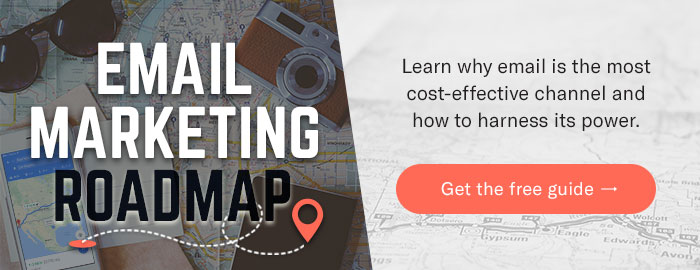 So you want to send an email marketing campaign to your customers. You’ve got your customer list optimized and uploaded into your system of choice, typically an email service provider that you pay a monthly fee to use (since it’s not like you can just CC a few thousand people in Outlook). You’ve figured out the best day and time to send, and you’ve done your research on crafting a subject line that will deliver a good open rate without landing your message in the junk folder. You know what you want to share with your audience, and you’ve developed engaging content that will provide value instead of annoying your readers. You’re ready to dive into designing and coding your email campaign. So what now?
So you want to send an email marketing campaign to your customers. You’ve got your customer list optimized and uploaded into your system of choice, typically an email service provider that you pay a monthly fee to use (since it’s not like you can just CC a few thousand people in Outlook). You’ve figured out the best day and time to send, and you’ve done your research on crafting a subject line that will deliver a good open rate without landing your message in the junk folder. You know what you want to share with your audience, and you’ve developed engaging content that will provide value instead of annoying your readers. You’re ready to dive into designing and coding your email campaign. So what now?
When it comes to email design, the list of what doesn’t work (from a technical perspective) is much longer than the list of what does work. Email clients have different requirements than web browsers, so HTML emails need to be designed and coded according to different standards than websites. Use this checklist to ensure that your campaign looks great for each and every one of your recipients:
Item 1: Use Tables
Yes, tables are incredibly outdated, but you’ll need to party like it’s 1999 when designing for email, since “<div>” tags may not work in all email clients. And use colspans as sparingly as possible, since these may also break.
Item 2: Use Inline CSS
Never use a linked stylesheet. You can place CSS in the <head> section, but for maximum effectiveness, every paragraph, image and design element should have its own CSS included inline.
Item 3: Make it Functional
Don’t go beyond 600 pixels wide, and stick to web-safe fonts or text embedded in images. Stay away from JavaScript, attachments and background images.
Item 4: Always Specify
Font families, image sizes, table and cell sizes, and colors (including background colors) all need to be specified.
Item 5: Make it effective
Design an eye-catching header using relevant, non-cheesy, attractive images. Keep your branding front and center, and make sure your main point—your headline—is “above the fold,” to use an old newspaper term, meaning recipients don’t have to scroll down to see it.
Item 6: Make it Mobile Friendly
Large calls-to-action and buttons make emails easier to interact with on smartphones and tablets.
Item 7: Include a Text-only Version
Your email service provider should provide the functionality to include a separate text-only version, which will be automatically sent to recipients who can’t view HTML emails.
Item 8: Include a Browser Version Link
Give your recipients the option to see your email in a web browser in case they can’t or don’t want to view your campaign’s images in their email client.
Item 9: Be Compliant
Be sure your message is CAN-SPAM compliant, which most importantly means including a valid unsubscribe link and processing unsubscribe requests quickly.
Item 10: Test, Then Test Again
Try out your email in as many email clients, browsers and operating systems (including mobile) as possible. This means opening, clicking and combing for errors many times over. There are also services you can purchase a subscription to that will do much of this work for you.
Getting a hang of HTML email design will take some effort and a lot of trial and error, but it’s definitely doable for people who already have a foundation in HTML and CSS. But if you’d rather leave all that up to someone else, we just might be able to help.


![Better Email Etiquette Equals Better Marketing Results [16 Rules]](https://www.outboundengine.com/wp-content/uploads/shutterstock_411184843-1-400x250.jpg)

